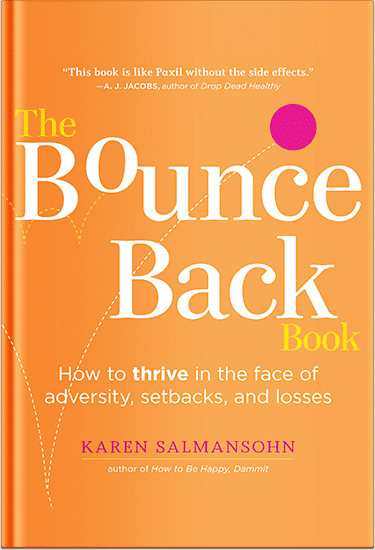 When you take a bite of your favorite chocolate chip cookie, what’s the first thing you notice? Is it the sweetness of the chocolate chips, the aroma of freshly baked dough, or something else entirely?
When you take a bite of your favorite chocolate chip cookie, what’s the first thing you notice? Is it the sweetness of the chocolate chips, the aroma of freshly baked dough, or something else entirely?
Chances are, one of the first sensations you encounter is the texture and mouthfeel of the cookie.
Texture and mouthfeel are integral aspects of the eating experience, impacting not only how food tastes but also how we perceive it.
I’m writing this article because I’m a bestselling wellness author and I write a lot about mindful eating. In fact, I share a lot about the importance of “appreci-eating” your food in my online program, “The Stop Emotional Eating Course.”
In this article, we delve into the world of texturizers, uncovering the science behind texture, and why it’s a vital consideration for both food companies and consumers.
The Art of Texture and Mouthfeel
Let’s start with the basics. Texture refers to the feel, appearance, or consistency of food in your mouth. It encompasses qualities like chewiness, crunchiness, creaminess, and more. On the other hand, mouthfeel is the perception of texture in your mouth, which can be described as sensations like fatty, waxy, gritty, or pulpy. These attributes are essential contributors to the overall eating experience.
Why Texture Matters
Now that we’ve established what texture and mouthfeel are, it’s time to explore why they’re crucial elements of the culinary journey:
1. Flavor Enhancer:
Texture isn’t just about how food feels; it profoundly impacts how it tastes. The crunch of a potato chip, the creaminess of ice cream, or the chewiness of a steak can enhance or modify the flavor of the food. The way textures interact with our taste buds can accelerate, decelerate, or mask flavors, creating a symphony of sensations on our palate.
2. Sensory Satisfaction:
Different individuals have varying preferences when it comes to texture. For some, the delight of biting into a crispy apple is unparalleled, while others revel in the smoothness of a velvety chocolate mousse. Meeting these sensory expectations is essential for consumer satisfaction. When a food product delivers the expected texture, it enhances the overall dining experience.
3. Emotional Connection:
Texture isn’t just about physical sensations; it can evoke emotions and memories. The comfort of warm, creamy mashed potatoes may remind you of family gatherings, while the crackling crust of freshly baked bread might transport you to a quaint bakery. Texture has the power to create a sense of nostalgia and connection to our past.
From Palate to Plate: Why Texture Matters to Companies
Texture isn’t just a matter of personal preference; it’s also a significant consideration for food companies. Here’s why:
- Brand Distinction: Texture can be a powerful tool for brand differentiation. Think about your favorite brand of potato chips or ice cream. Chances are, you recognize it not only by taste but also by texture. Consistency in texture helps build brand loyalty.
- Product Development: Creating the perfect texture is a science. Food scientists and technologists work diligently to develop texturizers that enhance or modify the texture of foods. These ingredients play a pivotal role in product innovation and development, enabling companies to meet consumer demands for specific textures.
- Consumer-Centric Approach: In today’s competitive food industry, consumer feedback is invaluable. Understanding what textures consumers prefer allows companies to tailor their products to meet these preferences. This consumer-centric approach can lead to increased sales and brand success.
Texture Transformation with Texturizers
Texturizers are the unsung heroes behind the scenes, responsible for achieving the desired textures in food products. These ingredients can come from a variety of sources, including starches, flours, fibers, proteins, and more. Whether it’s making a potato chip perfectly crispy or creating the smoothest yogurt, texturizers are the secret agents of the food industry.
Savoring Every Bite with Texture
As you savor your next meal, take a moment to appreciate the role of texture and mouthfeel. These sensory elements elevate the eating experience from ordinary to extraordinary. They influence how we perceive taste, connect with our emotions, and even shape our memories. Texture isn’t just a matter of personal preference; it’s a science and an art that impacts both consumers and food companies alike. So, the next time you enjoy your favorite dish, remember that texture is more than just a sensation—it’s an essential ingredient in the recipe for gastronomic delight.
Learn More About Mindful Eating
Explore my nutritionist recommended online program: The Stop Emotional Eating Course.
P.S. Before you zip off to your next Internet pit stop, check out these 2 game changers below - that could dramatically upscale your life.
1. Check Out My Book On Enjoying A Well-Lived Life: It’s called "Your To Die For Life: How to Maximize Joy and Minimize Regret Before Your Time Runs Out." Think of it as your life’s manual to cranking up the volume on joy, meaning, and connection. Learn more here.
2. Life Review Therapy - What if you could get a clear picture of where you are versus where you want to be, and find out exactly why you’re not there yet? That’s what Life Review Therapy is all about.. If you’re serious about transforming your life, let’s talk. Learn more HERE.
Think happier. Think calmer.
Think about subscribing for free weekly tools here.
No SPAM, ever! Read the Privacy Policy for more information.
One last step!
Please go to your inbox and click the confirmation link we just emailed you so you can start to get your free weekly NotSalmon Happiness Tools! Plus, you’ll immediately receive a chunklette of Karen’s bestselling Bounce Back Book!


 When you take a bite of your favorite chocolate chip cookie, what’s the first thing you notice? Is it the sweetness of the chocolate chips, the aroma of freshly baked dough, or something else entirely?
When you take a bite of your favorite chocolate chip cookie, what’s the first thing you notice? Is it the sweetness of the chocolate chips, the aroma of freshly baked dough, or something else entirely? 